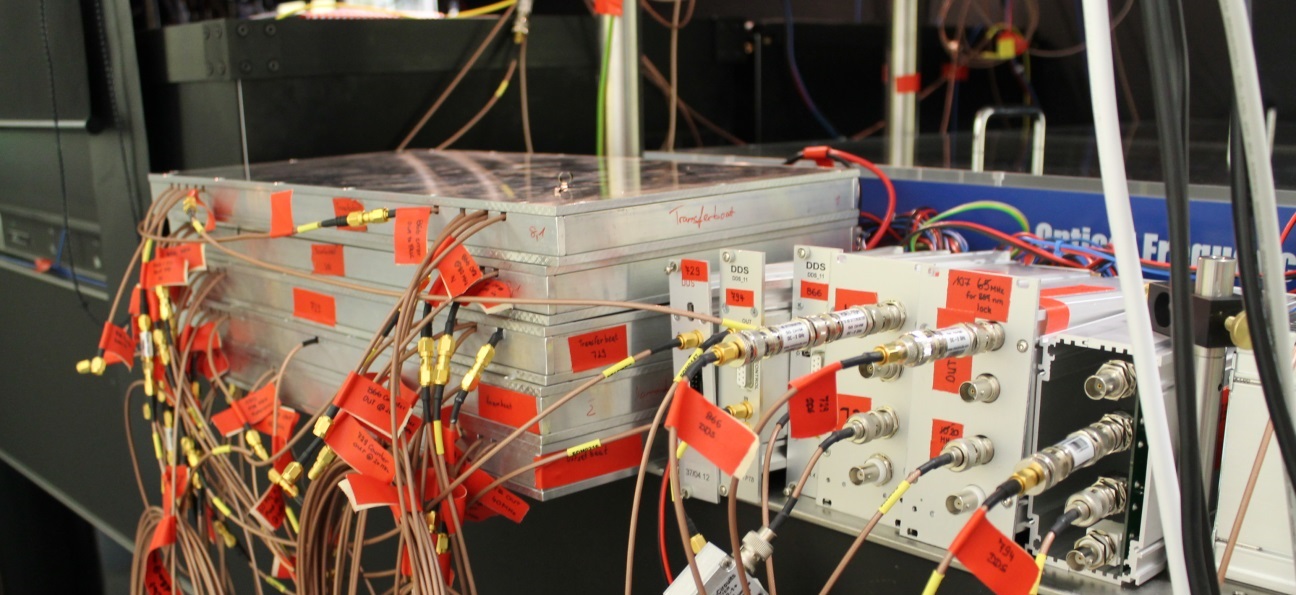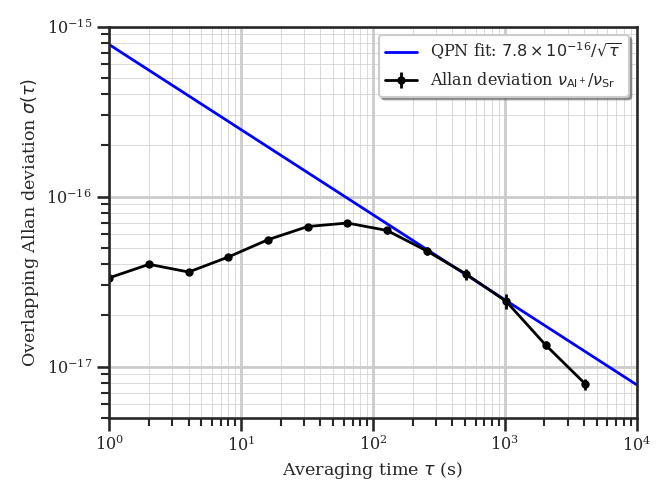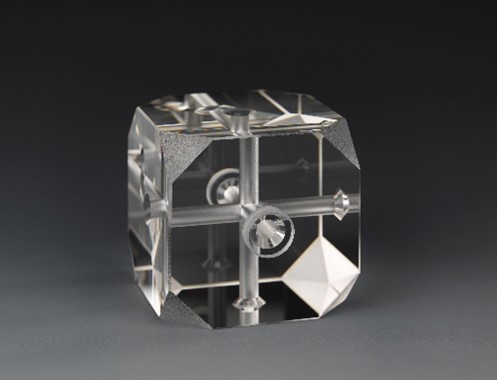News from the lab
Aluminium clock transition
We successfully drove the clock transition in aluminium and where able to participate in first clock comparisons with the ytterbium ion clock and the strontium lattice clock here at PTB. We were able to achieve a stability of 7.8x10-16/√(τ/1s) for clock interrogation times of 350ms.
Dual coating cavity
We tested a cavity with a multilayer coating for 729nm and 1069nm, to lock both logic lasers on the same cavity. We investigated for systematic effects which could decrease the performance of multiwavelength cavity compared to a single wavelength coating. In our paper we show that there is a correlation in the Photo thermal effect, when both lasers are locked to the cavity. But the noise of this effect is below the thermal noise limit. For more detailed information look here.
Comb End-to-End Topology
Our fiber frequency comb is stabilized to the ultrastable silicon cavity-stabilized laser from our colleagues at PTB's length division. We recently upgraded the length stabilization of the aluminum and calcium clock lasers to avoid uncompensated paths. This upgrade will help mitigate residual phase noise from the different comb branches.
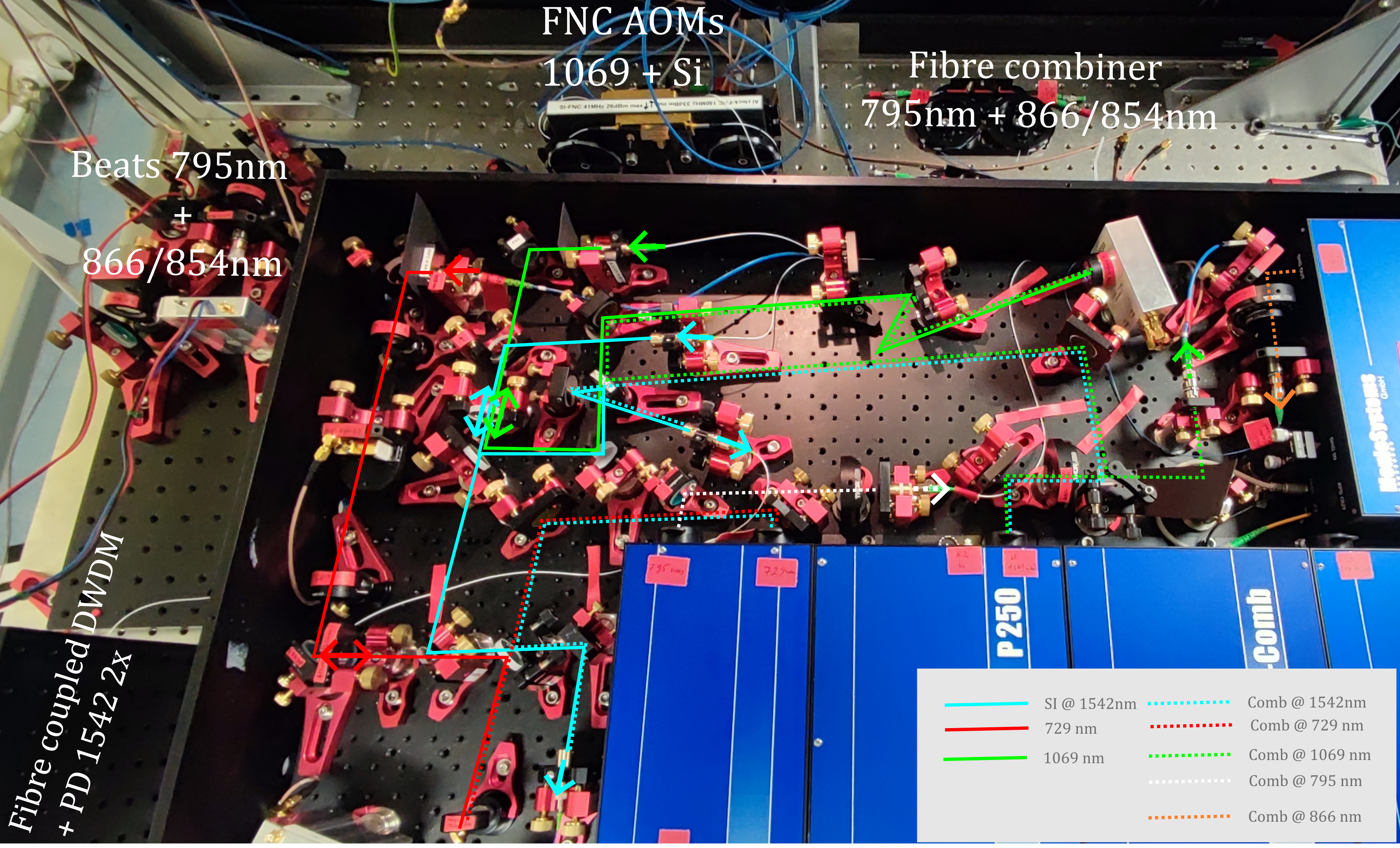
Vacuum Chamber Upgrade
The vacuum chamber design was upgraded to reduce the background gas pressure. Therefore, the titanium-sublimation pump was replaced by two ion getter pumps, which can be installed closer to the main chamber. Simultaneously, back-reflecting mirrors were installed in the chamber to allow for path length stabilization in the future
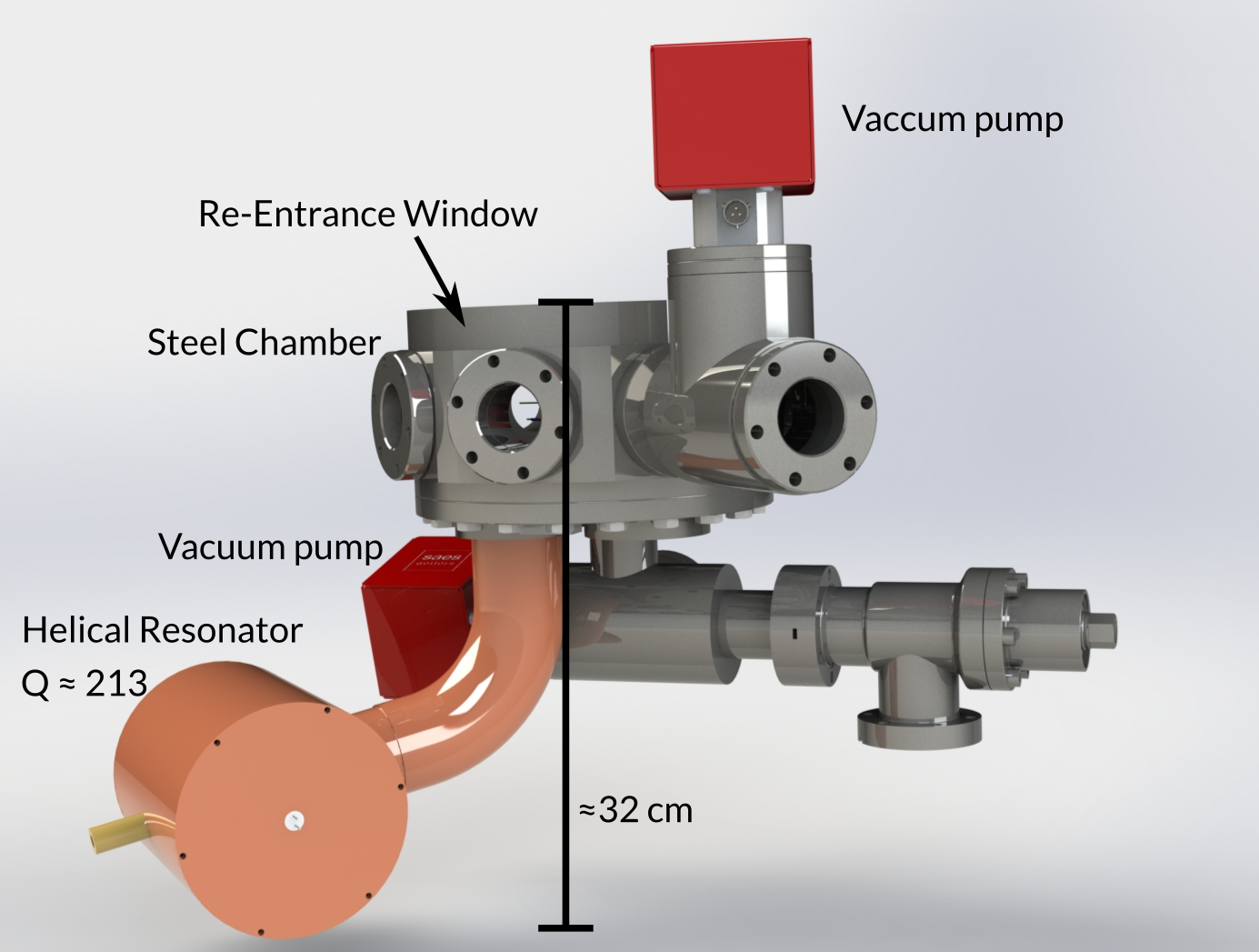
Monolithic frequency doubling cavity for Al clock light
The Al-Clock experiment developed two mechanical monolithic enhancement cavity designs for SHG in the VIS and UV. They are mechanical highly stable and gas tight. All degrees of freedom are adjustable using high precision fine-threaded screws from outside.
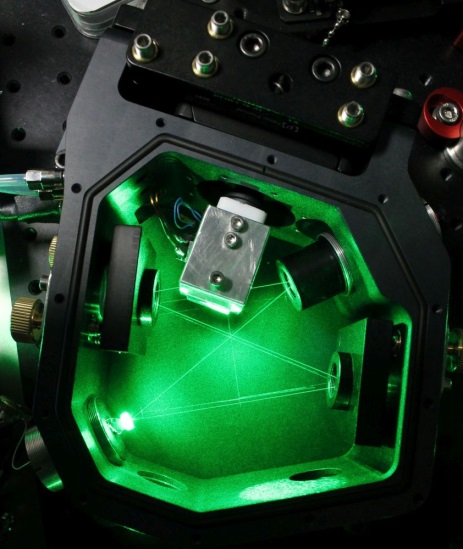
High-Bandwidth Transfer-Locking
Controlling the relative phase between two lasers, so that they oscillate with a precisely-known frequency relationship, is a valuable experimental capability. It allows the manipulation of coherent superpositions of several atomic internal states (by matching the frequency differences between lasers to the energy differences between states) and it means that a single carefully-stabilized laser can serve as a reference for others, which can then share its stability while being much simpler, cheaper and more compact. For lasers operating at the same wavelength, whose frequencies differ by at most a few GHz, this can be accomplished simply by overlapping light from the two lasers and measuring the beat note with a fast photo-detector. But what if the lasers are of completely different colours, separated in frequency by hundreds of THz?
We’ve adapted and extended the transfer-oscillator technique, a method for comparing the frequencies of lasers at widely separated wavelengths using an optical frequency comb to bridge the spectral gap between them. Unlike the traditional implementation, our version is immune to even fast (µs-scale) phase fluctuations of the optical frequency comb, so that even at short times it lets us measure the frequency relationship between the lasers we are interested in without interference from the noisy frequency comb that connects them. We now use this scheme to phase-lock all the important lasers in the experiment, from 267 nm to 866 nm, to a single stable reference laser at 1542 nm. Among other benefits, this lets us perform coherent manipulations involving three different electronic levels in Ca+ at once.
For further information you can read the paper or this more accessible introduction to the scheme.
